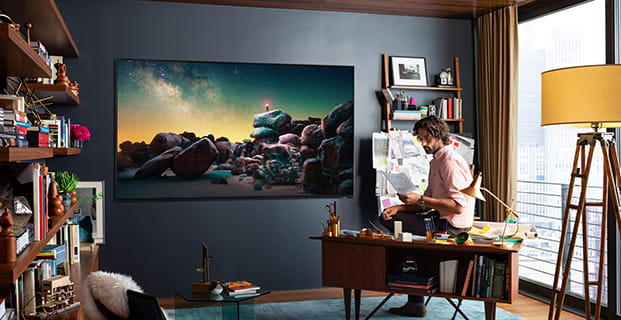
Nu finns en kravlista för 8K
En industrigrupp kallad 8K Association – där flera stora elektroniktillverkare som exempelvis Panasonic, Samsung och Intel är medlemmar – har nu släppt en lista med specifikationer som krävs för att en tv-apparat ska kunna märkas med den officiella logotypen för 8K (det vill säga den mycket höga upplösningen på 7680 × 4320 pixlar som på sikt lär ersätta 4K).
Flera av detaljerna har inte avslöjats för allmänheten, men rör områden som bitdjup, färgrymd, vitbalans och svärta.
8K-upplösning
Wikipedia (en)
8K resolution refers to an image or display resolution with a width of approximately 8000 pixels. 8K UHD (7680 × 4320) is the highest resolution defined in the Rec. 2020 (UHDTV) standard.8K displays are said to produce images with such detailed colors that they evoke stronger sensory experiences. This phenomenon has been likened to hyperrealistic art. High-resolution displays such as 8K allow for each pixel to be indistinguishable to the human eye when viewed at a typical distance from the screen. 8K resolution can also be used for the purpose of creating enhanced lower resolution videos through a combination of cropping techniques and/or with downsampling techniques used in video and film editing. Resolutions such as 8K allows filmmakers to shoot in a high resolution with a wide lens or at a further distance, in the case of potentially dangerous subjects (such as in wildlife documentaries), by being able to zoom and crop digitally in post-production. The technique involves taking a portion of the original 8K image and cropping it to match a smaller resolution such as the current industry standard for high-definition televisions (4K, 1080p, and 720p).8K display resolution is the successor to 4K resolution. TV manufacturers pushed to make 4K a new standard by 2017. The feasibility of a fast transition to this new standard is questionable in view of the absence of broadcasting resources. It is predicted that 8K-ready devices will still only account for 3% of UHD TVs by 2023 with global sales of 11 million units a year. However, TV manufacturers remain optimistic as the 4K market grew much faster than expected, with actual sales exceeding projections nearly 6-fold in 2016.In 2013, a transmission network's capability to carry HDTV resolution was limited by internet speeds and relied on satellite broadcast to transmit the high data rates. The demand is expected to drive the adoption of video compression standards and to place significant pressure on physical communication networks in the near future.As of 2018, few cameras had the capability to shoot video in 8K, with NHK being one of the only companies to have created a small broadcasting camera with an 8K image sensor. By 2018 Red Digital Cinema camera company had delivered three 8K cameras in both a Full Frame sensor and Super 35 sensor. Until major content sources are available, 8K is speculated to become a mainstream consumer display resolution around 2023 as mentioned in UHD forum Phase-B recommendations. Despite this,
filmmakers are pushing demand for 8K cameras due to their ability to capture better 4K footage.
Omni är politiskt obundna och oberoende. Vi strävar efter att ge fler perspektiv på nyheterna. Har du frågor eller synpunkter kring vår rapportering? Kontakta redaktionen